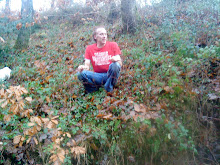
 Float-on Bog
Float-on BogMuch of the woods I have planted is damp ground, but quite a lot is on dangerous float-on bog, which has similar properties to quick-sand, if you tread on the wrong place. But the vegetation informs me 'where to tread and where not to tread'. Some bits are just not worth the risk and would probably not be able to support any trees. Float-on bog is water covered in a tangled layer of vegetation. There's allot of it dammed behind the river's natural levees, all along the valley, but these dangerous bogs are by no means confined to river valleys, but that's where they mostly are.
Planting in these places is a bit scary as the whole surface structure sags and quivers as I carefully step into and accross it. However one benefit is that I only need use the spade to cut hole. No digging is required; I can then stuff the little tree or plant into the wet peat with my foot.
Alders and Willows are really the only of the big(ish) trees to be able to grow on the float on, although many others will grow around the edges. Guelder Rose, Blackthorn and Hazel seem to do remarkably well too.
It is important to note, that all trees, even swamp trees are going to be stunted in the middle of a swamp. Most, esp. The bog trees (Willow & Alder) love being on the edge of a swamp, with their roots in both wet and dry ground. These grow more quickly than any other trees in this location.

 Trees and plants in the early years, were all planted in small groups and in a variety of different habitats, basically to see what they would tolerate and what they preferred.
Trees and plants in the early years, were all planted in small groups and in a variety of different habitats, basically to see what they would tolerate and what they preferred.



